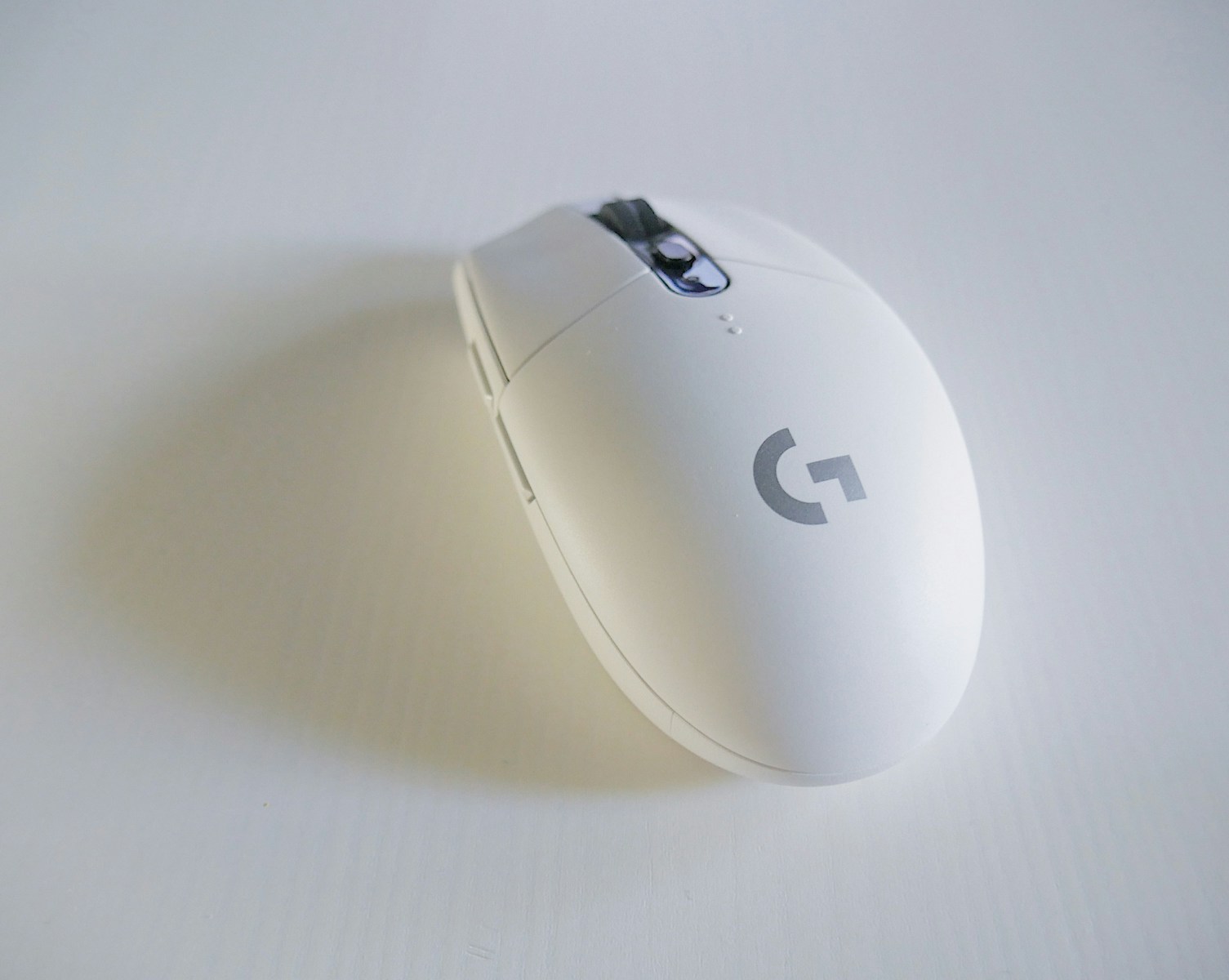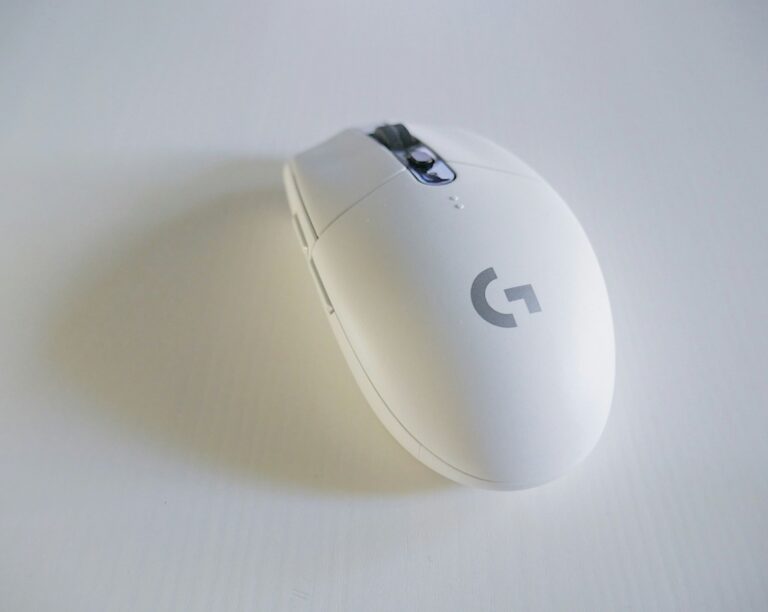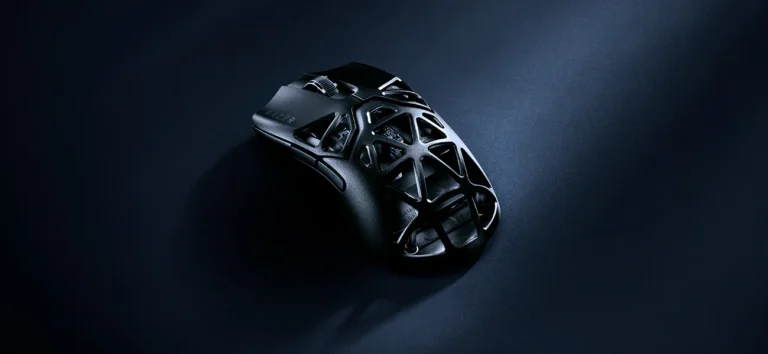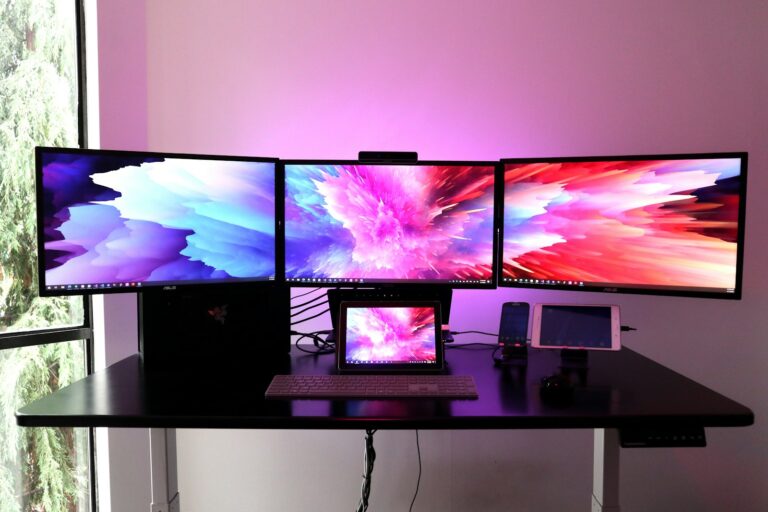
It’s frustrating when you sit down at your computer and your mouse won’t respond to your movements. Whether your cursor is frozen or moving erratically, a non-working mouse can halt your productivity completely. If your mouse isn’t working, check the physical connection first, then verify the batteries or charge level for wireless models, and finally make sure your drivers are up to date.
Mouse problems often have simple solutions. Sometimes it’s as easy as unplugging and reconnecting your device to a different USB port. For wireless mice, the issue might be a dead battery or connection problem. If your mouse lights up but doesn’t move, it could indicate a driver issue or hardware failure that needs addressing.
Even modern, high-quality mice can experience issues from time to time. Dust accumulation, outdated drivers, or conflicts with other devices can all cause problems. Luckily, most mouse issues can be resolved with a few simple troubleshooting steps without needing technical expertise or expensive replacements.
1. Check the Basics First
Before diving into technical troubleshooting, start with the simplest checks:
- Power: If you’re using a wireless mouse, make sure the batteries are fresh or fully charged.
- Connection: For wired mice, ensure the USB plug is firmly connected. Try unplugging and plugging it back in.
- Port Issues: Test the mouse in a different USB port. Sometimes, the port itself may be faulty.
2. Test the Mouse on Another Device
To rule out hardware failure:
- Plug your mouse into a different computer or laptop.
- If it works there, the issue is likely with your computer’s settings or drivers.
- If it doesn’t work, the mouse itself may be defective.
3. Clean the Mouse and Surface
Dirt or debris can interfere with mouse performance.
- Optical/laser sensor: Wipe the sensor with a soft, dry cloth.
- Mouse feet: Clean the bottom of the mouse to ensure smooth tracking.
- Surface: Use a proper mouse pad, as glossy or reflective surfaces can confuse the sensor.
4. Restart Your Computer
Sometimes, a simple restart resolves temporary glitches with drivers or system processes.
5. Update or Reinstall Drivers
Corrupted or outdated drivers can cause your mouse to stop working.
- Windows: Go to Device Manager > Mice and other pointing devices, right-click your mouse, and select Update driver.
- Mac: Ensure your system is updated via System Preferences > Software Update.
- If updating doesn’t help, uninstall the driver and restart your computer—drivers will reinstall automatically.
6. Check Bluetooth (for Wireless Mice)
If you’re using a Bluetooth mouse:
- Make sure Bluetooth is turned on.
- Remove and re-pair the mouse in your Bluetooth settings.
- Ensure no other device is interfering with the connection.
7. Look for Software Conflicts
Some third-party applications or settings may interfere with mouse functionality.
- Boot into Safe Mode to see if the mouse works there.
- If it does, a software conflict may be the cause.
8. Hardware Failure
If none of the above solutions work, your mouse may simply be failing. In that case, it might be time to replace it.
Quick Troubleshooting Checklist
✔ Check batteries or charging
✔ Reconnect or switch USB ports
✔ Test mouse on another device
✔ Clean sensor and surface
✔ Restart computer
✔ Update/reinstall drivers
✔ Re-pair Bluetooth connection
Final Thoughts
A non-working mouse can usually be fixed with a few quick checks, but if you’ve tried everything and it still doesn’t respond, replacing it may be the most efficient solution. Keeping a spare mouse handy can save you time and stress in the future.
Key Takeaways
- Check physical connections and battery levels before attempting more complex troubleshooting solutions.
- Outdated or corrupted drivers often cause mouse functionality problems and can be easily updated through device settings.
- Regular cleaning and proper storage of your mouse can prevent many common issues from developing over time.
Understanding Basic Mouse Functionality
A computer mouse translates physical movements into cursor actions on your screen. When your mouse stops working properly, understanding its basic components can help you troubleshoot the issue effectively.
Types of Mouse Connections
Your mouse connects to your computer through different methods, each with unique troubleshooting approaches. USB mice plug directly into your computer’s USB port, providing a reliable wired connection. If your wired mouse isn’t functioning, try connecting it to another USB port.
Wireless mice use either Bluetooth or RF (Radio Frequency) technology with a USB receiver. When your wireless mouse stops responding, the connection may need to be reset.
For Bluetooth mice, try turning Bluetooth off and on in your computer settings. For RF mice, unplug and reconnect the receiver. Some wireless mice have a connection button you’ll need to press to reestablish communication with the receiver.
Power Source and Batteries
Unlike wired mice that draw power through the USB connection, wireless mice depend on batteries. If you notice your mouse becoming less responsive or functioning intermittently, battery issues are often the culprit.
Most wireless mice use AAA or AA batteries that need regular replacement. Some modern models feature rechargeable batteries that require periodic charging through USB cables.
To check battery status:
- Look for low battery indicators (often a light that turns red)
- Observe if performance decreases during use
- Replace batteries even if they seem fine (weak batteries can cause erratic behavior)
Some wireless mice include battery-saving features that put them to sleep after periods of inactivity, which might make you think they’re malfunctioning when they just need to be “woken up.”
Common Causes for Mouse Malfunction
When your mouse stops working, several underlying problems could be at fault. Understanding these issues can help you quickly diagnose and resolve the problem without needing professional assistance.
Hardware Damage and Wear
Physical damage is a leading cause of mouse failures. Look for visible signs like frayed cables, cracked housing, or damaged USB connectors. These issues often develop gradually through normal use.
For wireless mice, battery issues are extremely common. A dead battery is the most likely reason for a sudden failure. Try replacing the batteries even if you think they’re new – sometimes batteries can be defective.
The sensor on the bottom of your mouse can become obstructed by dust, hair, or debris. Check and clean it gently with compressed air or a cotton swab.
Internal components like switches and scroll wheels wear out over time. Mouse buttons may become less responsive or “double-click” when you only press once.
Quick check for hardware issues:
- Inspect for physical damage
- Replace batteries (wireless models)
- Clean the sensor area
- Test on different surfaces
Driver Issues and Updates
Outdated or corrupted mouse drivers often cause erratic behavior. Your mouse might freeze, move unpredictably, or stop responding entirely.
Problems are frequently caused by outdated or corrupted drivers. Windows updates sometimes conflict with existing drivers, causing previously working mice to malfunction.
To update your drivers:
- Open Device Manager
- Expand “Mice and other pointing devices”
- Right-click your mouse device
- Select “Update driver”
- Choose to search automatically
If updates don’t work, try uninstalling the device (it will reinstall automatically when reconnected). This often resolves corrupted driver issues.
For gaming or specialized mice, manufacturer-specific software might be required. Check the manufacturer’s website for the latest drivers and configuration tools.
Inadequate Power Supply
USB ports supply power to your mouse, and sometimes they don’t provide enough. This is particularly true for high-performance gaming mice with RGB lighting or extra features.
Signs of power issues include:
- Mouse lights up but doesn’t move the cursor
- Intermittent disconnections
- Features like lighting working but tracking doesn’t
Try connecting to a different USB port. Ports on the back of desktop computers typically provide more power than front panel or keyboard hub ports.
For laptops, power management settings might be limiting USB power to save battery. Check your power settings and disable USB selective suspend if necessary.
Wireless charging mice need proper alignment on their charging pads. Make sure the mouse is positioned correctly and the charging surface is clean.
Operating System Conflicts
Sometimes your operating system’s settings or recent updates cause mouse problems. Mouse acceleration, pointer speed, or accessibility features might be misconfigured.
Check these Windows settings:
- Mouse properties (pointer speed, double-click speed)
- Touchpad settings that might interfere with external mice
- Ease of Access settings (mouse keys, pointer control)
Recent Windows updates can sometimes break mouse functionality. The Hardware Troubleshooter in Windows can help identify and fix these issues.
Third-party software can also interfere with mouse operation. Try booting into Safe Mode to determine if another program is causing conflicts.
Remember that some mouse issues only appear in specific applications. Test your mouse in different programs to isolate application-specific problems.
USB Port Malfunctions
USB ports themselves can fail or develop problems that prevent your mouse from working properly. Testing your mouse in multiple ports can quickly identify this issue.
If your mouse works in a different port, the original port likely has a problem. USB ports can become damaged from:
- Physical stress (yanking cords)
- Power surges
- Dust and debris accumulation
- Internal connection failures
USB hubs can introduce additional complications. If you’re using a hub, try connecting directly to your computer instead. Unpowered hubs often can’t provide enough power for all connected devices.
For wireless mice with USB receivers, interference can be an issue. Try moving the receiver to a port with clearer line-of-sight to the mouse. Keep the receiver away from other wireless devices, metal objects, and USB 3.0 devices that can cause interference.
Troubleshooting Techniques
When your mouse stops working, several simple fixes can often solve the problem. These techniques range from basic connection checks to more advanced system troubleshooting methods.
Checking Physical Connections
First, make sure your mouse is properly plugged in. If you’re using a wired mouse, check that the cable is securely connected to your computer. Try using a different USB port as the current one might be damaged.
For wireless mice, ensure the USB receiver is properly plugged in. Sometimes, using a USB extension cable can help if your computer is far from your desk or if there’s interference.
Check for visible damage to the cable or connector. Bent pins or frayed cables often cause connection problems.
If you’re using a Bluetooth mouse, verify that Bluetooth is enabled on your computer. Distance can also be an issue – try moving the mouse closer to your computer.
Restarting the Device
A simple restart of your laptop or computer can fix many mouse issues. Electronics sometimes develop temporary glitches that a restart can clear.
For wireless mice, try turning the mouse off and on again. This can reset the connection and fix minor software issues.
Remove and reinsert batteries for battery-powered mice. Sometimes poor battery contact causes problems even with fresh batteries.
After restarting your computer, test if the mouse is recognized when you plug it in. Listen for the sound notification that indicates device connection.
Using Device Manager
Device Manager can help identify and fix mouse-related problems. To access it, right-click on the Start button and select “Device Manager.”
Look for “Mice and other pointing devices” in the list and expand it. Check if your mouse appears there. A yellow exclamation mark indicates a problem.
Right-click on your mouse device and select “Properties” to see specific error messages. You can try disabling and re-enabling the device through the right-click menu.
If your mouse doesn’t appear at all, look in the “Unknown devices” section. This might indicate that Windows can’t identify your mouse properly.
Updating Mouse Drivers
Outdated or corrupted drivers often cause mouse problems. In Device Manager, right-click on your mouse and select “Update drivers.”
Choose “Search automatically for drivers” to let Windows find the appropriate driver. Alternatively, visit the manufacturer’s website to download the latest drivers manually.
If updating doesn’t work, try uninstalling the driver completely. Right-click on the mouse in Device Manager and select “Uninstall device.” Then restart your computer, and Windows will reinstall the driver automatically.
For gaming or specialized mice, use the manufacturer’s software to ensure proper functionality and access to all features.
Running Hardware Troubleshooter
Windows has built-in tools to diagnose hardware issues. Click on the Start button and type “Hardware Troubleshooter” in the search bar.
Follow the on-screen instructions as the troubleshooter scans your system for problems. It can automatically fix many common issues.
For Windows 10 and 11, you can also access troubleshooters through Settings > Update & Security > Troubleshoot.
The troubleshooter will specifically check your mouse and other input devices, offering fixes for detected problems.
Booting into Safe Mode
If your mouse works inconsistently, try booting your computer in Safe Mode. This loads only essential drivers and can help determine if third-party software is causing the issue.
To enter Safe Mode, restart your computer and press F8 during startup (methods vary by Windows version). Select “Safe Mode” from the menu.
If your mouse works in Safe Mode but not in normal mode, a third-party program or driver is likely interfering with your mouse functionality.
After confirming the mouse works in Safe Mode, restart in normal mode and begin uninstalling recently added software to identify the culprit.
Software Solutions and Settings
Most mouse problems can be fixed through software adjustments. The right settings can resolve cursor issues, power problems, and compatibility conflicts without needing new hardware.
Adjusting Mouse Settings
If your mouse isn’t working properly, start by checking your system’s mouse settings. In Windows, you can access these through the Control Panel or Settings app under “Devices” and “Mouse.” Here you can adjust crucial settings like:
- Pointer speed – Too fast or slow settings can make your mouse feel unresponsive
- Double-click speed – If set too fast, your double-clicks might not register
- Scroll settings – Customize how many lines scroll with each wheel movement
You might need to check the device drivers as well. Sometimes downloading specialized software for your mouse can cause problems if it installs the wrong driver. If this happens, you may need to uninstall and delete the problematic driver.
For gaming or precision work, try disabling mouse acceleration for more predictable movement.
Managing Power Settings
Power management issues often cause wireless mouse problems. Your mouse might be entering sleep mode too quickly or having battery problems.
First, check if your batteries need replacing or if your rechargeable mouse needs charging. A drained battery is a common cause of mouse failure.
You can adjust power settings through:
- Control Panel > Power Options > USB settings
- Device Manager > USB Root Hub > Power Management
Uncheck “Allow the computer to turn off this device to save power” for your USB controllers to prevent disconnection of your USB receiver or wired mouse.
For Bluetooth mice, check if your computer’s Bluetooth is enabled and functioning. Sometimes reconnecting the Bluetooth connection solves the problem.
Updating Operating System
Outdated operating systems often cause mouse compatibility issues. Windows and other OS updates frequently include fixes for device drivers and connectivity problems.
To check for updates on Windows:
- Go to Settings > Update & Security
- Click “Check for updates”
- Install any available updates
After major OS updates, you might need to reinstall or update your mouse drivers. You can do this through Device Manager:
- Right-click Start > Device Manager
- Expand “Mice and other pointing devices”
- Right-click your mouse > Update driver
If the standard driver doesn’t work well, visit the manufacturer’s website to download their official driver. This is especially important for gaming mice or those with special features.
Touchpad problems might also be caused by outdated system files that an update can fix.
When to Seek Professional Help
Sometimes mouse problems go beyond simple fixes. If you’ve tried all the basic troubleshooting steps and your mouse still doesn’t work, it might be time to get expert assistance.
Utilizing Warranties
Check if your mouse is still under warranty before paying for repairs. Most manufacturers offer warranties ranging from 1-3 years on their mice.
How to check your warranty status:
- Find your receipt or order confirmation email
- Look up your product on the manufacturer’s website
- Check the original packaging for warranty information
If your mouse is covered, you can usually get a free replacement or repair. Contact the manufacturer’s customer support with your hardware troubleshooting results to speed up the process.
Be prepared to provide proof of purchase and explain all the steps you’ve already tried. You might need to send your mouse back to the manufacturer, so ask about shipping costs and timelines.
Professional Repair Services
When your warranty has expired, professional repair services can help fix complex issues. Computer repair shops can diagnose problems with mouse drivers or damaged internal components.
When repair is worth it:
- For expensive high-end gaming mice
- When the issue affects multiple USB ports
- If your computer has broader connectivity problems
Professional technicians have specialized tools to test connections and replace tiny components that you can’t fix at home. Most shops offer diagnostic services for $20-50.
For wireless mice with battery issues, ask if the repair shop can replace rechargeable batteries. Sometimes it’s more cost-effective to purchase a new mouse, especially for basic models that cost less than repair fees.
Preventive Measures and Best Practices
Taking care of your mouse can save you from frustrating problems down the road. Simple habits and smart choices make a big difference in how long your mouse lasts and how well it works.
Regular Maintenance
Keeping your mouse clean is crucial for proper functioning. Dust and debris can block the sensor or get trapped in the buttons, causing erratic behavior.
For optical or laser mice, use a microfiber cloth to gently wipe the bottom surface weekly. Pay special attention to the sensor area, which can collect lint and dust. You can use a can of compressed air to blow out particles from crevices.
For mice with removable parts:
- Turn off the mouse before cleaning
- Remove the battery (if wireless)
- Use a slightly damp cloth (not wet) to clean the surface
- Allow to dry completely before reconnecting
The surface you use matters too. A quality mousepad provides consistent tracking and reduces wear on the mouse feet.
Proper Handling and Usage
How you use your mouse directly affects its lifespan. Avoid dropping or banging your mouse, as this can damage internal components.
For wireless mice, replace batteries before they’re completely drained. Low batteries often cause erratic cursor movement before failing completely. Many modern mice have battery indicators—pay attention to these warnings.
Keep your USB receiver plugged into the same port when possible. Constantly changing ports can sometimes cause recognition issues. For laptops, try using the same USB 3 port each time for consistent performance.
Store your mouse properly when traveling. Avoid putting pressure on buttons or the scroll wheel, and use a protective case if possible.
Choosing the Right Mouse
Selecting an appropriate mouse for your needs prevents many issues from occurring in the first place.
Consider these factors when purchasing:
| Mouse Type | Best For | Considerations |
|---|---|---|
| Wired USB mouse | Reliability, gaming | No battery concerns, less interference |
| Wireless mouse | Flexibility, travel | Requires battery management, may have latency |
| Bluetooth | Clean setup, multiple devices | May need repairing occasionally |
For intensive computer use, invest in an ergonomic mouse that fits your hand size. This reduces strain and helps maintain proper positioning.
Check for compatibility with your operating system. Some mice offer customization options through software that may only work with specific systems.
For professionals or gamers, higher DPI (dots per inch) settings allow for more precise mouse cursor movement. This feature is worth considering if you need fine control.
Frequently Asked Questions
Mouse problems can be frustrating but are often solvable with the right troubleshooting steps. Here are answers to common questions about mouse functionality issues.
What steps can I take if my mouse is connected but unresponsive?
First, check the physical connection. Make sure the cable is securely plugged in or the wireless receiver is properly connected to a functioning USB port.
Try connecting the mouse to a different USB port. Sometimes ports can become faulty or might not provide enough power.
Restart your computer. This simple step often resolves temporary software glitches that might be preventing your mouse from working properly.
How can I troubleshoot a non-working wired mouse?
Inspect the mouse cable for any visible damage or fraying. Cable issues are a common cause of mouse failure.
Test the mouse on another computer if possible. This will help determine if the problem is with the mouse itself or your computer.
Check Device Manager to ensure the mouse drivers aren’t disabled or having problems. Right-click on Start, select Device Manager, and look under “Mice and other pointing devices.”
What are common issues causing a wireless mouse to fail even with new batteries?
Check for interference from other wireless devices. Items like routers, Bluetooth speakers, or even some USB 3.0 devices can interfere with your mouse’s signal.
Ensure the wireless receiver is within range. Most wireless mice need to be within 5-10 feet of their receiver to function properly.
Re-pair your mouse with its receiver. Many wireless mice have a connect button that needs to be pressed to establish a new connection after battery replacement.
What should I do if my laptop’s touchpad stops functioning?
Check if the touchpad is disabled. Many laptops have a function key combination (often Fn + F7 or similar) that toggles the touchpad on and off.
Look for a dedicated touchpad switch or button. Some laptops have a small button or touch-sensitive area that enables or disables the touchpad.
Update your touchpad drivers. Outdated or corrupted drivers are often the cause of touchpad issues.
How can I resolve mouse functionality issues on Windows 10?
Run the built-in Hardware Troubleshooter. Windows 10 includes troubleshooting tools that can automatically detect and fix mouse problems.
Check for Windows updates. Missing updates can sometimes cause compatibility issues with mice and other peripherals.
Review your mouse settings. Go to Settings > Devices > Mouse to ensure your mouse is configured correctly for your needs.
What troubleshooting methods are available for mouse problems on Windows 11?
Try using keyboard navigation to access mouse settings. Press Win+I to open Settings, then use Tab and arrow keys to navigate to Bluetooth & devices > Mouse.
Check for corrupted drivers in Device Manager. Uninstall the mouse driver and restart your computer to let Windows reinstall it.
Use Safe Mode to determine if third-party software is causing the issue. If your mouse works in Safe Mode, a program or service may be interfering with normal operation.



